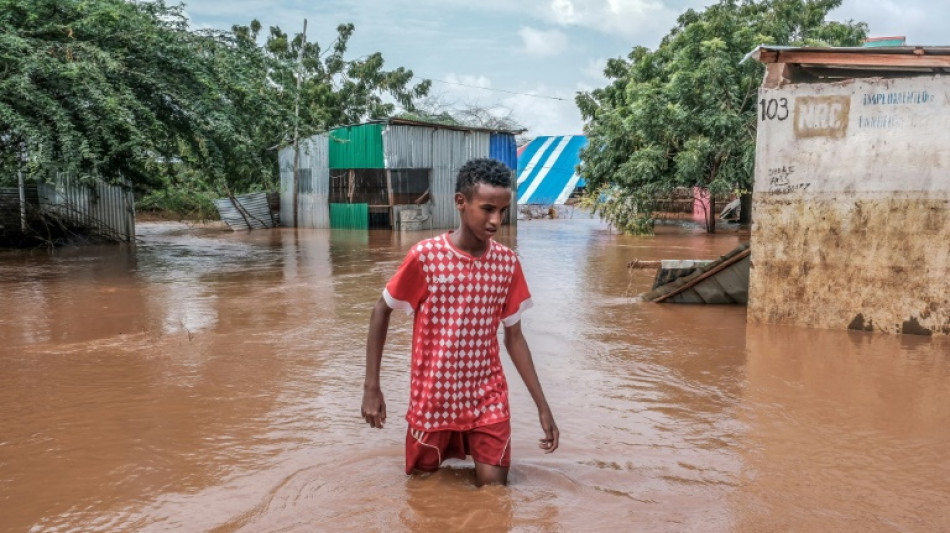
NGG
-1.2400

More than two million people across the Horn of Africa have been forced from their homes by torrential rains and floods, according to an AFP tally compiled Thursday from government and UN figures.
Almost 300 people have also lost their lives in Somalia, Kenya and Ethiopia as the region grapples with its latest devastating climate disaster.
The heavy rainfall, linked to the El Nino weather pattern, has struck just as the region is emerging from the worst drought in 40 years that drove millions into hunger.
"It's a dire situation," the charity Action Against Hunger said in a statement late Wednesday, on the eve of the start of the COP28 climate summit in Dubai.
"Regions that were struggling to recover from the economic and environmental impacts of prolonged drought are now doubly burdened with flooding," it said.
The Horn of Africa is one of the regions most vulnerable to climate change -- even though the continent's contribution to global carbon emissions is a fraction of the total.
Extreme weather events are occurring with increased frequency and intensity.
The latest disaster has exacerbated a deep humanitarian crisis in Somalia, one of the poorest countries on the planet that has also been battling a bloody Islamist insurgency for the past decade and a half.
- 'Once in a century' -
Flooding has cost the lives of more than 100 people, and displaced more than one million, according to a joint statement issued by the United Nations and Somali officials on Thursday.
Authorities in Mogadishu declared a state of emergency earlier this month over what the United Nations has described as "once in a century" flooding, and have warned against the proliferation of disease.
The deluge has engulfed homes and farmland and left many communities marooned, with roads and bridges damaged and hospitals and schools closed.
An estimated 1.5 million children under the age of five are facing acute malnutrition over the period between August this year and July 2024, the joint UN-Somali statement warned.
"Recurrent climate shocks, widespread insecurity and rampant poverty have pushed the people of Somalia to breaking point," UN envoy George Conway said.
The statement said that floodwaters could swamp more than 1.5 million hectares (3.7 million acres) of farmland in December.
In a move that could help alleviate the situation for some, the Somalia government said it had received 25,000 tonnes of grain from Russia that would be distributed urgently to flood-affected people, with another 25,000 tonnes expected later in December.
While the country narrowly avoided famine thanks to humanitarian aid, the UN's World Food Programme warned earlier this month that a quarter of its population –- 4.3 million people –- are forecast to face crisis-level hunger by the end of the year.
- Cholera outbreak -
In neighbouring Kenya, the interior ministry said Thursday the death toll from the flood disaster had risen to 136, with more than 460,000 people displaced.
Another 57 people have perished in Ethiopia and more than 600,000 have been displaced, according to the UN's humanitarian response agency OCHA.
In one of the hardest hit areas, the Somali region in eastern Ethiopia, cholera has claimed the lives of at least 23 people, with a total of 772 confirmed cases, Save the Children said Thursday.
"The cholera outbreak in Ethiopia and across the Horn of Africa could spiral out of control if swift action isn't taken by government and donors to provide clean drinking water and sanitation facilities for communities forced out of their homes by floodwaters," it warned.
burs/txw/acc
D.Smith--NZN